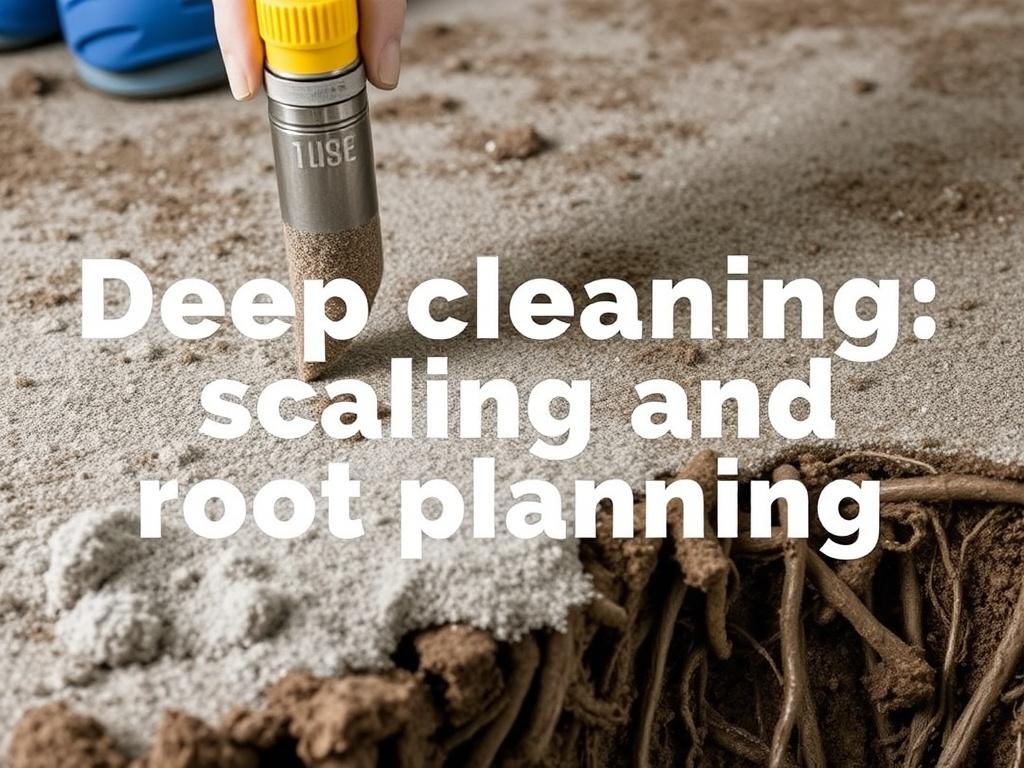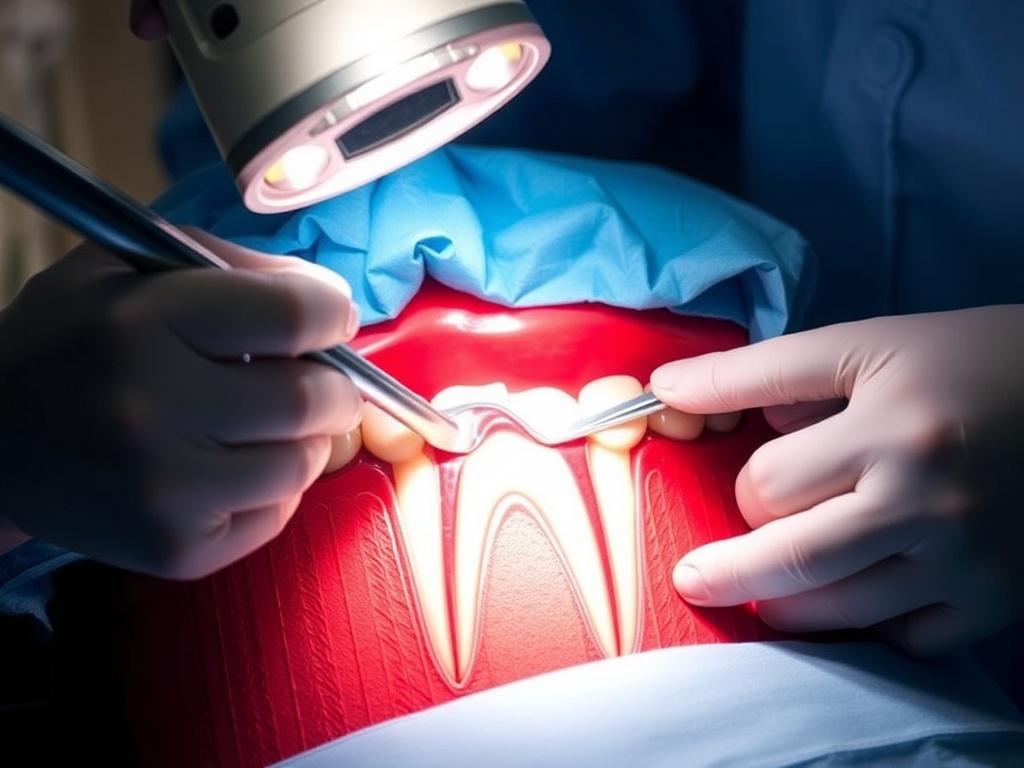When it comes to maintaining your oral health, regular brushing and flossing are just the starting points. Sometimes, your dentist may recommend a more thorough procedure called deep cleaning, which includes scaling and root planing. This treatment is essential when dealing with gum disease and other dental issues that can’t be fully addressed through routine care. But what exactly is deep cleaning, and why is scaling and root planing so important? In this comprehensive article, we’ll take a detailed look at these dental procedures, how they work, and the benefits they provide to keep your smile healthy and vibrant.
Содержание
- 1 Understanding Deep Cleaning: What Is It?
- 2 Why Is Scaling and Root Planing Necessary?
- 3 What Happens During the Scaling Procedure?
- 4 Root Planing: Smoothing and Healing Below the Surface
- 5 What to Expect Before, During, and After the Procedure
- 6 Risks and Benefits of Deep Cleaning: Scaling and Root Planing
- 7 Who Should Consider Scaling and Root Planing?
- 8 Cost and Insurance Coverage
- 9 Preventing the Need for Deep Cleaning
Understanding Deep Cleaning: What Is It?

Deep cleaning is a dental procedure designed to remove plaque, tartar, and bacteria from below the gumline and smooth out the roots of your teeth. Unlike a standard dental cleaning, which focuses mainly on the surfaces of your teeth, deep cleaning targets areas deeper within the gums where infection and inflammation often reside. This process helps to prevent the progression of gum disease, also known as periodontal disease, which is a major cause of tooth loss in adults.
The two main parts of deep cleaning are scaling and root planing:
- Scaling: This involves removing plaque and tartar deposits from the tooth surfaces and beneath the gums.
- Root Planing: This smooths out the roots of the teeth to help the gums reattach to the teeth and heal properly.
Both procedures work hand-in-hand to reduce inflammation, eliminate harmful bacteria, and restore the health of the gum tissue.
Why Is Scaling and Root Planing Necessary?
Scaling and root planing become necessary when plaque and tartar buildup extends beneath the gumline, causing pockets to form between the teeth and gums. These pockets trap bacteria and debris, further worsening gum inflammation and infection. If left untreated, this can lead to periodontitis, an advanced stage of gum disease characterized by gum recession, bone loss, and eventually tooth loss.
Many people are unaware they have gum disease because early symptoms may be subtle or mistaken for normal gum sensitivity. Common signs that scaling and root planing might be needed include:
- Persistent bad breath
- Red, swollen, or tender gums
- Gums that bleed easily during brushing or flossing
- Gum recession or pulling away from the teeth
- Loose teeth or changes in bite
If you experience any of these symptoms, your dentist will typically perform a periodontal exam to measure pocket depths around each tooth and assess your gum health. When pockets measure deeper than 3 millimeters, scaling and root planing are often recommended to control the infection.
The Science Behind Gum Disease and Pocket Formation
To understand why scaling and root planing are so effective, it’s important to grasp what happens beneath the gumline. Plaque is a sticky film composed of bacteria and food particles that constantly forms on your teeth. If plaque is not removed regularly, it hardens into tartar (calculus), a rough and porous substance that can only be removed professionally.
When tartar accumulates beneath the gums, it irritates the delicate gum tissue, causing inflammation called gingivitis. Without treatment, this inflammation destroys the connective tissues and bone that hold your teeth in place. As this destruction happens, pockets form and deepen between your gums and teeth, allowing more bacteria to invade and worsen the condition.
What Happens During the Scaling Procedure?

Scaling is the first step in deep cleaning, focusing on removing tartar and plaque from both above and below the gumline. During scaling, the dental hygienist or periodontist uses specialized instruments to carefully scrape away deposits on the tooth surfaces.
There are two main methods used for scaling:
| Method | Description | Advantages | Limitations |
|---|---|---|---|
| Manual Scaling | Using hand-held metal instruments called scalers and curettes to physically remove deposits. | Gentle, precise, effective on stubborn tartar | Time-consuming, sometimes uncomfortable |
| Ultrasonic Scaling | Using a vibrating ultrasonic tip with water to break up and wash away tartar. | Faster, less physical strain, often more comfortable | May cause sensitivity in some patients |
In many cases, a combination of both methods is used to achieve the best results. The goal during scaling is not only to clean visible surfaces but also to access hard-to-reach areas deep within gum pockets.
Root Planing: Smoothing and Healing Below the Surface
Once scaling is complete, root planing begins. This step involves smoothing the surfaces of the tooth roots to remove any remaining rough areas where bacteria might linger. Smoother roots help the gum tissue reattach firmly to the teeth and reduce further irritation.
Root planing may be somewhat less comfortable than regular cleaning because it often involves working below the gumline. Your provider might use numbing agents to reduce discomfort or schedule the procedure over multiple visits if extensive treatment is needed.
How Root Planing Contributes to Gum Health
By removing bacterial toxins and smoothing the roots, root planing encourages the healing and reattachment of gum tissue. This helps to tighten gum pockets, reduce inflammation, and stop the progression of gum disease. With healthier gums, patients experience less bleeding, swelling, and discomfort.
What to Expect Before, During, and After the Procedure

Preparation for scaling and root planing typically involves a thorough dental exam. Your dentist or periodontist will assess your oral health and discuss the extent of the procedure needed. Sometimes x-rays are taken to determine bone levels and identify areas of infection.
During the appointment, your dental professional will numb the treated areas to minimize discomfort. The scaling and root planing process can take anywhere from 30 minutes to multiple sessions depending on the severity of gum disease.
After treatment, it’s common to experience some tenderness, gum sensitivity, or mild bleeding. These symptoms usually subside within a few days. Your dentist will provide special oral hygiene instructions and may prescribe antimicrobial rinses or antibiotics to support healing.
Post-Treatment Care Tips
- Avoid smoking for faster healing
- Maintain gentle but thorough brushing using a soft-bristle toothbrush
- Floss daily, taking care not to irritate healing gums
- Use antimicrobial mouth rinses as recommended by your dental provider
- Follow up with regular dental check-ups and cleanings
Risks and Benefits of Deep Cleaning: Scaling and Root Planing
Like any dental procedure, scaling and root planing have both risks and benefits. Being informed helps you make the best decision for your oral health.
| Benefits | Risks and Side Effects |
|---|---|
|
|
Who Should Consider Scaling and Root Planing?
If you’ve been diagnosed with gingivitis or periodontitis, or if your dental exam reveals deep gum pockets, scaling and root planing might be the recommended treatment. It’s also highly beneficial if you have risk factors for gum disease such as:
- Smoking or tobacco use
- Diabetes or other systemic diseases
- Poor oral hygiene habits
- Family history of gum disease
- Stress or immune system challenges
Early intervention with deep cleaning can save you from more invasive procedures later, such as gum surgery or tooth extraction.
How Often Is Deep Cleaning Needed?
Most patients require scaling and root planing only once or periodically depending on their gum health. After the initial deep cleaning, your dentist will recommend a maintenance plan, which might include frequent cleanings every 3 to 4 months to keep gum disease under control.
Cost and Insurance Coverage
The cost of scaling and root planing varies depending on the complexity of the case and geographic location. Generally, dental insurance covers part of the cost if the procedure is deemed medically necessary. It’s always a good idea to check with your insurance provider and discuss payment options with your dental office.
Here’s a rough breakdown of average costs:
| Procedure | Average Cost |
|---|---|
| Scaling (per quadrant) | $75 – $150 |
| Root Planing (per quadrant) | $100 – $200 |
Quadruplets refer to dividing your mouth into four sections for this treatment, so the total can vary if multiple quadrants require treatment.
Preventing the Need for Deep Cleaning
While scaling and root planing are immensely beneficial, prevention is always better than treatment. Maintaining a solid oral hygiene routine can minimize or even avoid the need for deep cleaning procedures. Here are essential tips to protect your gums:
- Brush twice daily using fluoride toothpaste
- Floss at least once a day to remove plaque between teeth
- Visit your dentist regularly for check-ups and cleanings
- Avoid smoking and limit alcohol consumption
- Eat a balanced diet rich in vitamins and minerals
- Manage underlying health conditions like diabetes
Technology and Innovations in Deep Cleaning
Advancements in dental technology have made scaling and root planing more efficient and comfortable. Some dental offices utilize laser-assisted periodontal therapy, which can reduce bacteria and promote healing with less discomfort. Additionally, improved ultrasonic instruments and antimicrobial treatments complement traditional scaling and root planing for better outcomes.
Conclusion
Deep cleaning through scaling and root planing is a pivotal treatment in the fight against gum disease. Understanding the process, benefits, and proper care following the procedure empowers you to take charge of your oral health. Whether you’re experiencing symptoms of gum disease or looking to prevent it, remember that early intervention with scaling and root planing can save your smile and improve your overall well-being. By partnering with your dental provider and maintaining good oral hygiene habits at home, you can keep your gums healthy and enjoy a confident, bright smile for years to come.







